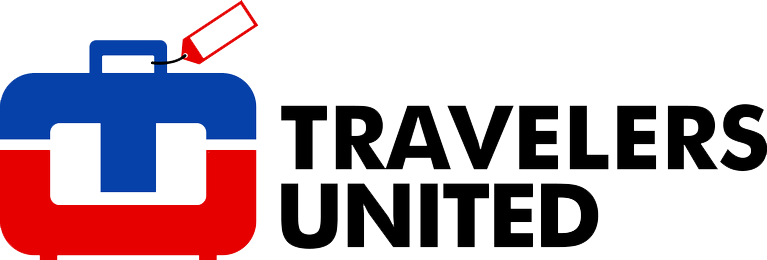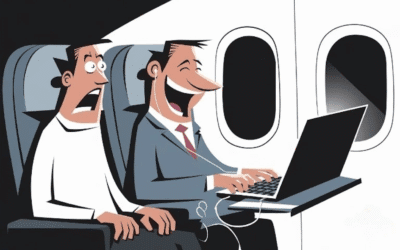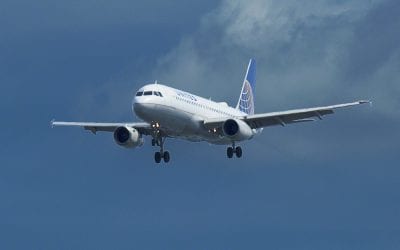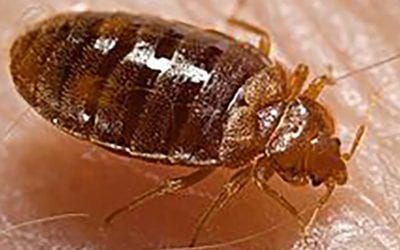Many airline passengers in economy are required to gate- check their carry-on prior to boarding, despite the planes’ overhead bins having lots of room. They need to carry-on packing strategies
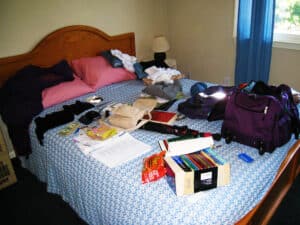 I don’t know what your flight boarding has been like lately. In economy when you have little status to be able to board among the first third of passengers. More and more often, when boarding is about half complete, gate agents force passengers to check their carry-on bags.
I don’t know what your flight boarding has been like lately. In economy when you have little status to be able to board among the first third of passengers. More and more often, when boarding is about half complete, gate agents force passengers to check their carry-on bags.
Gate agents try to speed boarding to allow their flights to depart on time. They don’t want to be the cause of a late departure. Flights that don’t leave on time can put gate agents in the unemployment line. If the flight is full, they seem to anticipate overflowing overhead bins and so start early to require economy passengers to gate-check their bags. When those passengers enter the plane and get toward its rear, they find overhead bins almost empty in the rear third of the plane.
Facing the gate check dilemma, airplane passengers in economy need to look at their packing strategy for their carry-on and personal item.
Air travelers need to take note of this dilemma facing them, particularly if they are flying in economy and even more so if they are flying in the back third of the plane. If seated there, the odds are high that they will have to gate-check their carry-on bag. They will be allowed to take their personal item on board, just not their carry-on bag. That means that air travelers need to change their strategy for packing carry-ons and personal items.
The new packing strategy won’t change my two primary rules for packing carry-on and personal items for air travel.

The rule holds even if you’re not taking checked luggage, as sometimes gate-checked carry-on bags are significantly damaged or lost. I’ve seen poor baggage handlers mishandle carry-ons and even drop them on to the tarmac from the jet bridge. I’ve been with passengers waiting for their bag on the gate bridge who are told that it’s not on the plane and others who found it severely damaged during gate checking.
Don’t take any prohibited items with you in any of your bags:
Suppose a prohibited item is found by airport security at an airport security checkpoint. In that case, the item will be confiscated and you may be delayed for a considerable time for questioning by a TSA TSO (Transportation Security Officer). Some air travelers have missed their flights due to their delay at airport security after they were discovered to have a prohibited item in their bags.
Too many passengers arrive at airport security and tell security after they find a prohibited item — such as a handgun — in one of their bags, that they forgot it was there. While it might be true, it takes a while for security personnel to decide they can still fly — without the handgun, of course. I recommend to all air travelers that they empty their carry-on or personal item entirely before packing it for their trip, then inspect them carefully before packing them.
What’s the new carry-on and packing strategy that air travelers should employ?
Please note that if you have the top airline status or are flying first or business class, you’ll be among the first passengers to board your flight and therefore won’t need to use the new packing strategy, because it’s highly unlikely that you’ll have to gate-check your carry-on. On the other hand, you might find the strategy helps make your flight easier.
In economy class seating, the airlines now force many economy passengers to gate-check their carry-ons. Air travelers must adopt a packing strategy that takes into account what items they should pack in their carry-on bag. Essentials can no longer be randomly distributed between the two, because you can’t be certain your gate-checked bag will meet you at your destination.
There are many items that air travelers should pack in their carry-on and personal items.
The general items that must be in your carry-on and personal item, whether or not you have checked luggage include.
- All valuables and breakables, as the airlines won’t accept responsibility or liability for their loss or damage.
- Essential health items such as prescription and over-the-counter medications.
- Items that are difficult or time-consuming to obtain at your destination.
- Personal care items, including shavers, etc.
- Toilet articles including shampoo and body wash, etc.
- An empty water bottle that you fill after passing through security.
- Emergency items including ziplock bags, spare batteries, travel duct tape and an umbrella, etc.
- Entertainment items, including an electronic tablet and a noise cancelling headset, etc.
- Sleep aids, including a sleep mask, ear plugs, inflatable pillow, etc., for longer flights.
- A full change of clothes.
- Any item you’re taking that’s prohibited from your checked luggage. But permitted in carry-ons, if any, such as spare Li-ion rechargeable batteries.
- Food, if you’re like me and don’t care for airplane food.
With these items laid out for packing before you depart, you need to decide where to pack them strategically.
True essentials should definitely be packed in your personal item, plus any items you might want during your flight. The rest can go in your carry-on.
I use a small backpack with multiple outside pockets and zippered compartments for personal items. Always pack all valuables and breakables. Pack also, essential health items, particularly my prescription medication and any over-the-counter medication I take on a daily basis. After security I fill my empty water bottle at the airport and place it in my personal item.
In addition to those essentials, I pack all items that I might need during the flight. I always pack my electronic tablet, noise canceling headset and sleep aids. I always include my sleep mask, earplugs and inflatable pillow, in my personal item.
Any Li-ion batteries or power stations that I bring on a trip are also packed as a personal item.
Once those items are in my small backpack used for my personal items. I pack other items that are on my list that can fit in my backpack. The rest of my essentials go into my carry-on.
The length of your flight can affect what items you consider essential to have with you.. For example, on a long flight, charging cables and chargers might be essential. You may have other items that you consider essential for your journeys. Make sure that they are packed in your personal item, too.

READ ALSO:
Noisy electronics on planes are becoming a big problem
Why we need a common flight credit rule for airlines from DOT — now
After many years working in corporate America as a chemical engineer, executive and eventually CFO of a multinational manufacturer, Ned founded a tech consulting company and later restarted NSL Photography, his photography business. Before entering the corporate world, Ned worked as a Public Health Engineer for the Philadelphia Department of Public Health. As a well known corporate, travel and wildlife photographer, Ned travels the world writing about travel and photography, as well as running photography workshops, seminars and photowalks. Visit Ned’s Photography Blog and Galleries.
